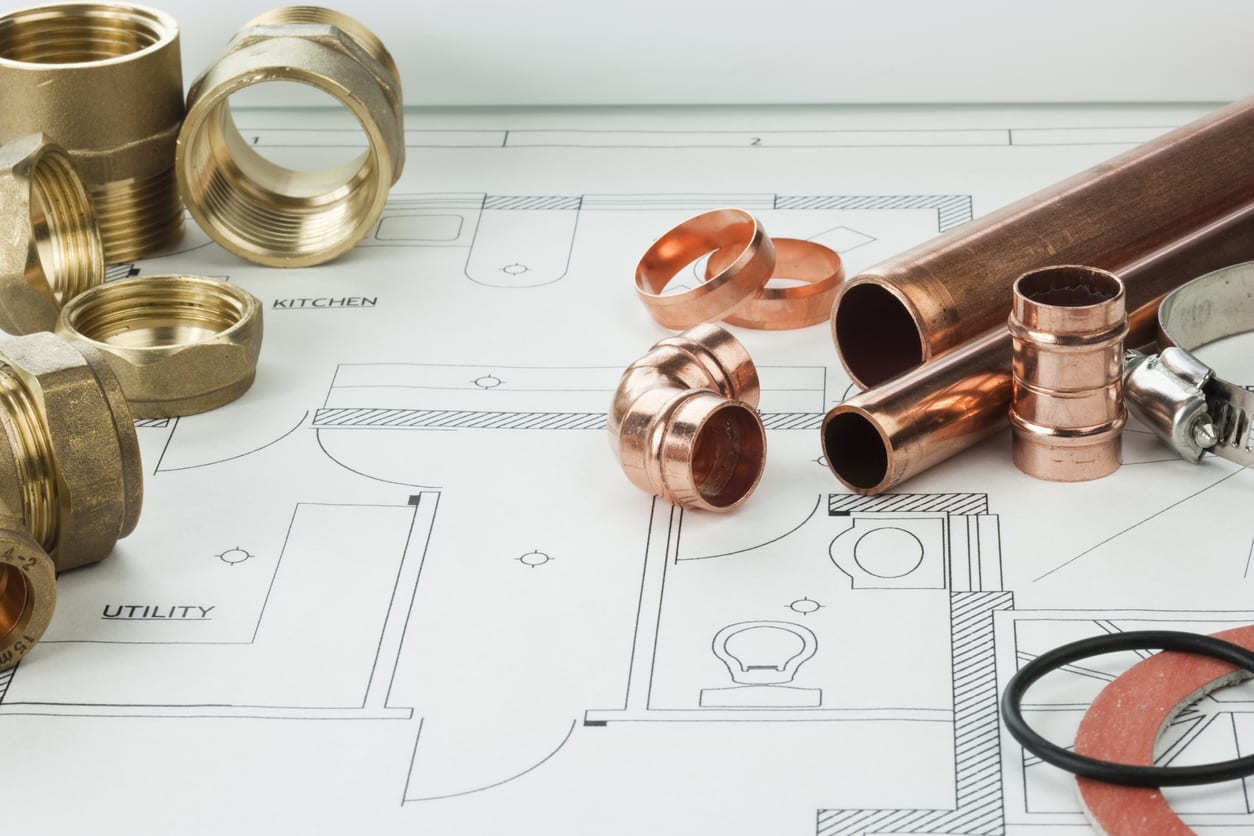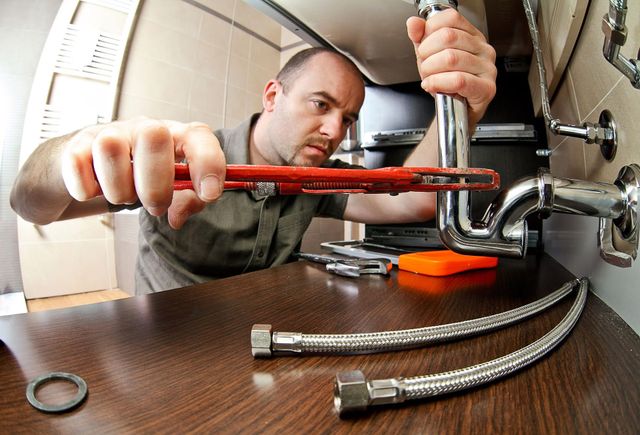Everyone is bound to have their own idea when it comes to The Inner Workings of Your Home's Plumbing.

Comprehending just how your home's plumbing system works is necessary for every single home owner. From supplying clean water for drinking, cooking, and bathing to securely getting rid of wastewater, a well-maintained plumbing system is critical for your family's health and wellness and convenience. In this comprehensive guide, we'll check out the detailed network that composes your home's pipes and offer tips on maintenance, upgrades, and managing usual concerns.
Intro
Your home's plumbing system is more than just a network of pipelines; it's an intricate system that guarantees you have access to tidy water and reliable wastewater removal. Knowing its elements and just how they collaborate can assist you protect against pricey repairs and ensure whatever runs smoothly.
Basic Components of a Plumbing System
Pipes and Tubing
At the heart of your plumbing system are the pipelines and tubes that bring water throughout your home. These can be made from various materials such as copper, PVC, or PEX, each with its advantages in terms of resilience and cost-effectiveness.
Components: Sinks, Toilets, Showers, and so on.
Fixtures like sinks, toilets, showers, and bath tubs are where water is made use of in your house. Comprehending how these fixtures link to the plumbing system aids in detecting issues and planning upgrades.
Valves and Shut-off Factors
Valves control the circulation of water in your pipes system. Shut-off valves are crucial throughout emergency situations or when you need to make fixings, enabling you to separate parts of the system without interfering with water flow to the whole home.
Water Supply System
Main Water Line
The major water line links your home to the local supply of water or a private well. It's where water enters your home and is distributed to numerous fixtures.
Water Meter and Pressure Regulatory Authority
The water meter steps your water usage, while a pressure regulatory authority makes certain that water streams at a safe pressure throughout your home's pipes system, avoiding damage to pipelines and fixtures.
Cold Water vs. Hot Water Lines
Recognizing the difference between cold water lines, which supply water straight from the main, and warm water lines, which carry warmed water from the water heater, assists in repairing and preparing for upgrades.
Drain System
Drain Pipes Pipes and Traps
Drain pipelines carry wastewater away from sinks, showers, and commodes to the sewage system or sewage-disposal tank. Traps avoid sewage system gases from entering your home and also catch debris that can cause obstructions.
Air flow Pipes
Air flow pipes permit air right into the drain system, protecting against suction that might slow down water drainage and cause catches to vacant. Appropriate air flow is essential for preserving the stability of your plumbing system.
Significance of Correct Drainage
Guaranteeing appropriate drain avoids back-ups and water damages. Routinely cleansing drains pipes and maintaining catches can stop pricey repairs and prolong the life of your pipes system.
Water Furnace
Sorts Of Water Heaters
Water heaters can be tankless or typical tank-style. Tankless heating units warm water as needed, while containers save heated water for instant usage.
Upgrading Your Pipes System
Factors for Upgrading
Updating to water-efficient components or replacing old pipelines can boost water high quality, minimize water costs, and increase the worth of your home.
Modern Pipes Technologies and Their Advantages
Explore modern technologies like smart leak detectors, water-saving commodes, and energy-efficient water heaters that can save cash and reduce environmental effect.
Expense Factors To Consider and ROI
Compute the in advance expenses versus lasting savings when thinking about pipes upgrades. Several upgrades pay for themselves with lowered utility expenses and fewer repair services.
Exactly How Water Heaters Link to the Plumbing System
Understanding just how hot water heater attach to both the cold water supply and warm water distribution lines helps in identifying problems like insufficient hot water or leaks.
Upkeep Tips for Water Heaters
Consistently purging your hot water heater to get rid of debris, examining the temperature level setups, and checking for leakages can prolong its life-span and enhance power effectiveness.
Typical Plumbing Issues
Leaks and Their Causes
Leaks can take place as a result of maturing pipelines, loosened fittings, or high water pressure. Dealing with leaks promptly prevents water damages and mold growth.
Clogs and Blockages
Blockages in drains and bathrooms are typically triggered by flushing non-flushable products or a buildup of grease and hair. Using drain screens and being mindful of what drops your drains can prevent clogs.
Indicators of Pipes Issues to Watch For
Low water stress, slow-moving drains, foul odors, or uncommonly high water expenses are signs of potential plumbing problems that should be attended to quickly.
Pipes Upkeep Tips
Normal Examinations and Checks
Arrange annual plumbing inspections to capture concerns early. Search for signs of leakages, rust, or mineral accumulation in faucets and showerheads.
Do It Yourself Upkeep Tasks
Simple tasks like cleaning tap aerators, checking for toilet leakages making use of dye tablets, or insulating revealed pipelines in chilly climates can stop major pipes problems.
When to Call a Specialist Plumbing Technician
Know when a plumbing concern needs professional competence. Trying intricate repair work without correct knowledge can result in even more damage and greater repair work expenses.
Tips for Reducing Water Use
Simple habits like taking care of leaks immediately, taking much shorter showers, and running full lots of laundry and recipes can conserve water and reduced your energy expenses.
Eco-Friendly Pipes Options
Consider lasting pipes materials like bamboo for flooring, which is durable and green, or recycled glass for counter tops.
Emergency Preparedness
Actions to Take During a Plumbing Emergency situation
Know where your shut-off shutoffs are located and exactly how to turn off the supply of water in case of a burst pipeline or major leakage.
Importance of Having Emergency Calls Useful
Maintain get in touch with info for neighborhood plumbers or emergency situation services readily offered for fast reaction throughout a pipes dilemma.
Ecological Impact and Conservation
Water-Saving Components and Appliances
Setting up low-flow taps, showerheads, and toilets can considerably lower water use without giving up performance.
DIY Emergency Situation Fixes (When Applicable).
Temporary fixes like utilizing air duct tape to spot a dripping pipe or putting a pail under a dripping faucet can lessen damages until an expert plumbing shows up.
Verdict.
Comprehending the makeup of your home's plumbing system empowers you to preserve it successfully, conserving money and time on fixings. By following regular maintenance routines and staying informed about modern-day pipes innovations, you can guarantee your pipes system runs efficiently for several years ahead.
Understanding Your Home Plumbing System: A Comprehensive Guide
Plumbing System: The Lifeline of Your Home
At its core, the plumbing system is designed to perform two primary functions: bring fresh water into your home and remove wastewater. The system is a network of pipes, fixtures, and other components that transport water and sewage. Residential plumbing systems include potable water supply lines, drain-waste-vent (DWV) systems, and various plumbing fixtures that make water use in daily tasks possible.
Key Components:
Water Supply: This part of your plumbing system brings municipal water into your home, passing through the main water supply line. It s responsible for supplying all water needs, from drinking to bathing.
Drainage System: It carries waste and water away from your home to the sewer or septic system. This system includes all the piping within your home that leads to external sewage or septic systems.
Vent System: An essential yet often overlooked component, the vent system allows sewer gases to escape and lets air into the drainpipes, ensuring water and waste move correctly through the system.
Fixture: More Than Just Taps and Toilets
Plumbing fixtures are the most interactive parts of the plumbing system, including faucets, showers, toilets, and sinks. Each fixture is connected to the plumbing system and plays a role in either the delivery of freshwater or the disposal of waste and wastewater.
Types of Fixtures:
Faucets and Sinks: Used for washing hands, dishes, and other daily water needs. Toilets: Dispose of human waste through the sewage system. Bathtubs and Showers: Provide bathing facilities, requiring both hot and cold water supply. Water Supply: The Source of Life
The water supply system is a critical component, ensuring that potable water is available throughout your home for various uses, including drinking, cooking, and cleaning. This system consists of pipes that distribute water to different parts of the house, controlled by valves to regulate the water flow.
Types of Plumbing: Materials and Methods
Various types of plumbing systems and materials are used in residential settings, each with its advantages and applications. From copper and PVC pipes for water supply to cast iron and ABS for drainage, the choice of materials can impact the longevity and efficiency of your plumbing system.
https://intownplumbingtx.com/articles/home-plumbing-system-guide/

I am very fascinated with Understanding Your Home's Plumbing Anatomy and I hope you liked the new blog entry. Do you know about another person who is enthusiastic about the subject? Do not hesitate to share it. I love your readership.
Call Today